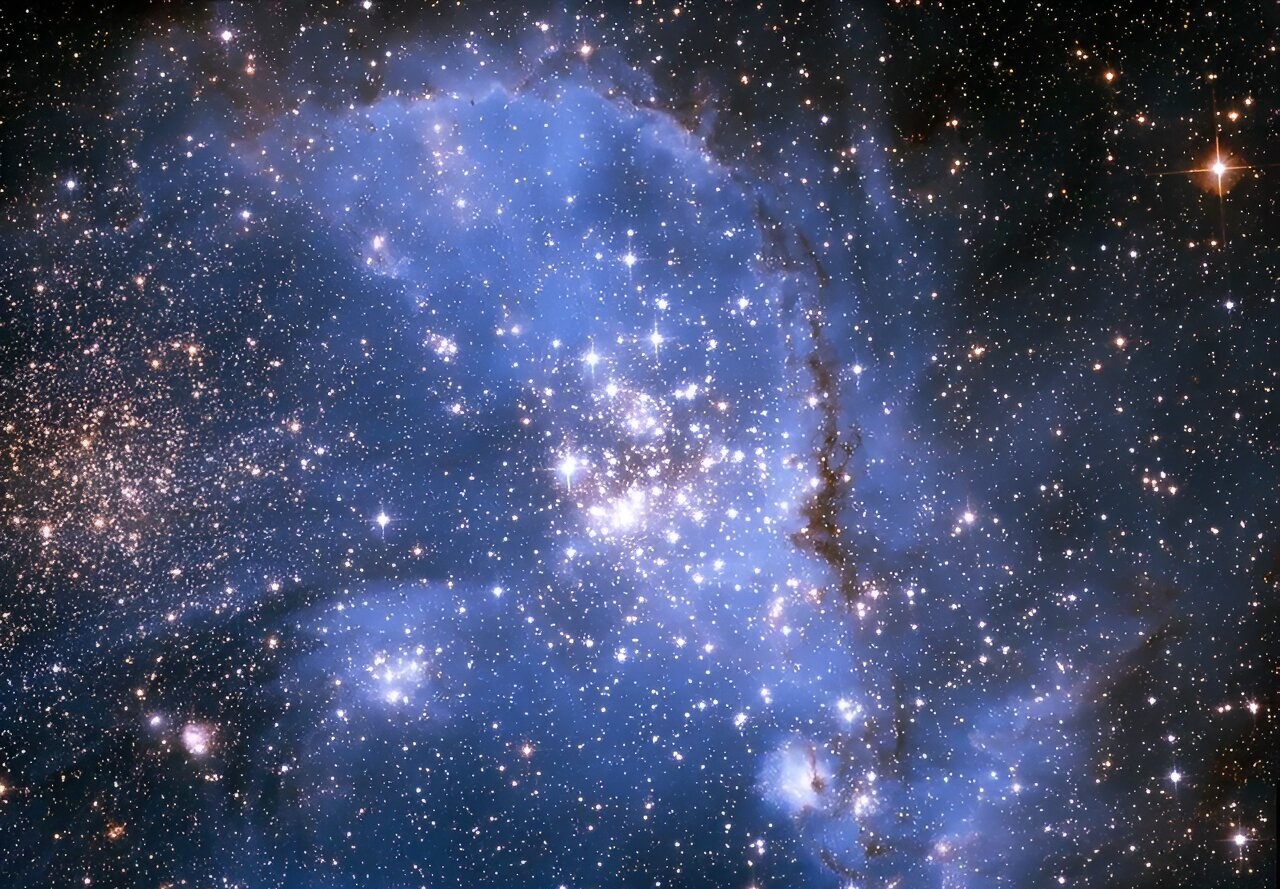Stars with very powerful magnetic fields are not very common, but a well-known phenomenon in the Milky Way. But they have been found outside it for the first time. Over time, these luminaries turn into extremely powerful pulsars and black holes.

Magnetic stars in neighboring galaxies
For the first time, scientists have been able to detect powerful magnetic fields in three massive and hot stars in a neighboring galaxy. Although similar magnetic stars have already been discovered in our Galaxy, their observation in the Small Magellanic Cloud is especially important because there are a lot of really young objects in it. This provides a unique opportunity to study those that are just being formed.
Magnetism is considered a key component of the evolution of massive stars, having a far-reaching influence on their ultimate fate. Such objects with an initial mass of more than eight solar masses turn into neutron stars and black holes at the end of their evolution.
When such objects form close binary systems, they can be expected to merge, which generates unusual gravitational waves. In addition, theoretical studies suggest a magnetic mechanism for the explosion of massive stars related to gamma-ray flares, X-ray flares and supernovae.
How is magnetism measured in stars?
The magnetic fields of stars are measured using a spectropolarimeter. To do this, circular polarization is determined for the electromagnetic radiation flux and the slightest changes in spectral lines are investigated. However, in order to achieve the necessary accuracy of such measurements, high quality of the initial data is necessary.
Due to these conditions, conventional high-resolution spectropolarimeters and smaller telescopes are not suitable for such studies. Therefore, a low-resolution spectropolarimeter FORS2 was used. It is installed on one of the four 8-meter telescopes of the Very Large Telescope (VLT) of the European Southern Observatory (ESO).
Why are magnetic stars difficult to explore
Previous attempts to detect magnetic fields in massive stars outside our galaxy have been unsuccessful. These measurements are complex and depend on several factors. The magnetic field, which is measured with circular polarization, is called longitudinal. It corresponds exclusively to the component of the field that is directed towards the observer.
Since the structure of the magnetic field of massive stars is usually characterized by a global dipole with an axis inclined to the axis of rotation, the intensity of its longitudinal component can be zero during the phases of rotation when the observer looks directly at the equator of the star.
Observing a wider spectral region with more lines in it is the best. In addition, a longer exposure time is crucial for recording polarimetric spectra with a sufficiently high signal-to-noise ratio.
What did the new observations show?
Taking these important factors into account, a team of astronomers conducted spectropolarimetric observations of five massive stars in the Magellanic Clouds. In two presumably single stars with spectral characteristics typical for the magnetic massive stars of our galaxy, and in one actively interacting massive binary system located in the core of the most massive stellar region NGC346 in the Small Magellanic Cloud, they were able to detect magnetic fields with a strength of the order of kiloGauss.
On the surface of our Sun, such strong magnetic fields can be detected only in small highly magnetized areas – spots. The discovery of such phenomena in the Magellanic Clouds is the first evidence that mass star formation in galaxies with a young stellar population occurs in the same way as in the Milky Way.
According to phys.org


